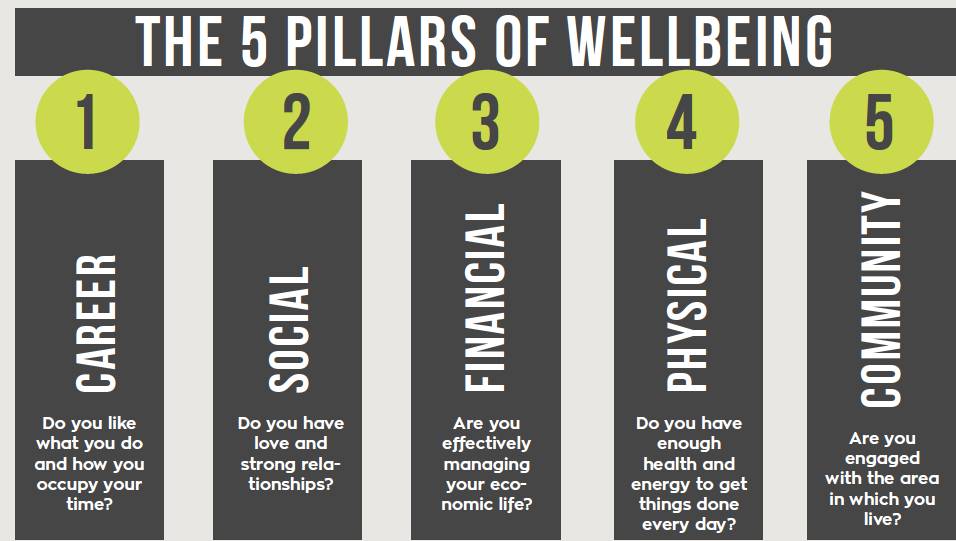Wellness at work is big business. The Global Wellness Institute (GWI) estimates that the global workplace wellness sector represented $43 billion in revenue in 2015, up more than 6 percent since 2011, despite the fact that only 9 percent of global workers have access to some type of workplace wellness program at their jobs. According to IBISWorld, the US share of that corporate wellness market was $2.9 billion in 2016 and will hit $9 billion by 2018. Meanwhile, from 2010 to 2015, 72 percent of US employers purchased screening services to identify employees’ health risks, and intervention services to promote healthy lifestyle choices. Most employers, especially large corporations, see investing in employee health as a strategic choice that can yield a substantial return on investment.
Yet despite the encouraging facts and trends, as a rule, wellness is not a strategic focus or a core value of most organizations. Instead, wellness initiatives — usually targeted toward mitigating risk of physical disease and disability — tend to launch as tacked-on HR initiatives in isolation from the day-to-day operations of a company. As the 2016 GWI report puts it, “They are merely a ‘Band-Aid solution’ and do not address the root of the problems.” Only 27 percent of respondents to a GWI and Everyday Health Inc. (EDH) survey believed that their employer offers workplace wellness services because it actually cares about their personal wellness. Other studies have shown participation rates ranging from 5 to 46 percent for specific wellness program components, and very limited employee use of Employee Assistance Programs (5 percent) to help cope with stress, substance abuse, and mental illness. Yet 71 percent of respondents to the GWI-EDH survey said they have a “somewhat or very high” level of stress at their jobs.
Luckily, a growing number of experts and companies have begun to redefine what wellness at work can and should mean. The process often starts with a key change of terminology from using the word “wellness,” which tends to evoke mostly the state of one’s physical health, to the word “wellbeing,” which implies a dynamic and active state of flourishing across multiple domains.
“Physical wellbeing is really important,” says Eileen McNeely, a researcher at Harvard’s Center for Health and the Global Environment, “but there’s a whole other piece that has to do with the emotional and spiritual aspects of wellbeing. We’re seeing a mind shift to focus as much on the other aspects as on physical health.” According to the GWI-EDH survey, for example,
companies that employees do perceive as caring are five times more likely to encourage taking time for self, pursuing hobbies, and socializing, and three times more likely to encourage or offer meditation.
McNeely is the co-director of the Sustainability and Health Initiative for NetPositive Enterprise (SHINE), a Harvard school of public health program that helps corporations measure and accelerate the ways in which they help the world become a healthier, more sustainable place. She and her team have identified three major ways companies are rethinking what “wellness at work” means.
THE 5 PILLARS OF WELLBEING

Adapted from “The Five Essential Elements of Wellbeing,” by Tom Rath and Jim Harter, Ph.D., Gallup Business Journal, May 4, 2010
WORK AS A PLATFORM FOR WELLBEING
“A new question employers are asking,” says McNeely, “is, ‘How does your work and workplace enhance your overall quality of life?’ This is not just at an individual level, but involves understanding what organizations can do to support a more meaningful, humane, respectful world.” Examples of acting on this new perspective include the practices — common in conscious business — of infusing purpose and meaning into work, understanding and addressing employees’ key basic needs, and deliberately building in company cultural practices that enhance the social connectedness of team members.
THE IMPORTANCE OF METRICS
“You manage what you measure,” McNeely says, “so it’s really important to understand how to move the needle. We already know from research that worker wellbeing influences family wellbeing and has community impact. We need good metrics to connect dots between what employees do at work, their quality of family life, and the wellbeing of the region.”
In 2013, SHINE and McNeely worked with Johnson & Johnson to build a survey to measure this new kind of wellbeing at work, which SHINE is now deploying in partnership with other companies, including through the whole supply chain of Levi Strauss and Co. One of SHINE’s key lessons so far is that combining metrics that measure mental, physical, and psychosocial wellbeing of workers with business metrics such as retention, absenteeism, productivity, and performance is essential to successful management of a holistic wellness program.
HEALTH IS A FORM OF SUSTAINABILITY
Another change McNeely is seeing is that enlightened companies are thinking of employee wellbeing not as an isolated risk-mitigation or HR responsibility, but as part of a larger commitment to sustainability. One of the SHINE member companies, industrial manufacturing giant Owens Corning, recently moved its 16,500-person employee wellness program into its sustainability department, for example. “Sustainability as a movement has grown up focused around the environment,” McNeely says. “We suggest putting health and people at the center of that. We need people to be filled up and nurtured and flourishing to care about the environment, and human capital is as important to sustain and regenerate as environmental resources are.” When companies see employee wellness and environmental sustainability as two sides of the same coin, they can begin to see how a commitment to keeping both sets of stakeholders healthy and productive in a holistic sense is vital to long-term business success.
As the GWI 2016 Future of Wellness report so eloquently puts it: “In the future, more employers will treat wellness as a top strategic concern at the highest levels of leadership. Businesses will focus on creating a culture of wellness — an environment in which employees are valued, all their different dimensions of wellness are recognized, and they are supported to develop healthy habits and lifestyles. In fact, more organizations — whether for-profit or mission-driven — will link their business objectives explicitly to human capital and creating a culture of wellness.”






